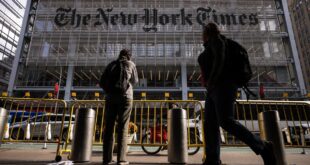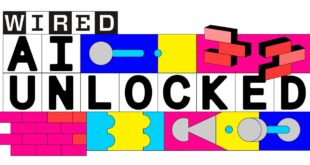Tesla has finally revealed its Cybercab, and it looks like a smaller, sleeker Cybertruck. And while many were expecting there to be at least one prototype of a robotaxi with no steering wheel or pedals, Tesla CEO Elon Musk delighted his fans with a lineup of 20 vehicles.
The flashy “We, Robot” event took place at Warner Bros. Discovery studio on Thursday. Before walking on stage, Musk walked over to a robotaxi, which opened its suicide doors, and did a short demo around the well-maintained streets of the Hollywood studio.
Musk repeated previous claims that the cost of autonomous transport will be so low, it will be akin to “individualized mass transit.” He said he believed the average operating cost of the Cybercab will be over time around $0.20 per mile.
“And you will be able to buy one,” Musk said, adding that the cost would be below $30,000.
Musk also noted he expects Tesla to start doing “unsupervised FSD in Texas and California next year” with the Model 3 and Model Y. He acknowledged that he’s too optimistic about timelines, but said he expects the Cybercab to be in production by 2026 or “before 2027.”
Tesla was originally slated to reveal its Robotaxi or Cybercab in August, but delayed the unveiling after the executive requested an “important design change to the front.”
The Robotaxi unveiling is part of Tesla’s push to go “balls to the wall for autonomy” this year after pivoting from prioritizing the production of a $25,000 EV and laying off 10% of staff, including most of the charging team. But Musk’s vision of an autonomous driving future has been in play for years, and a large part of the reason why investors price Tesla’s stock not as an automaker, but as a technology company.

The Cybercab prototype represents one half of the business concept Musk has set forth since at least 2019, wherein the automaker would run its own fleet of dedicated robotaxis on a Tesla ride-hail app, which Tesla teased during its first quarter investor call.
Musk has described the other half of the strategy as similar to Uber or Airbnb, where Tesla owners will be able to add their properly equipped vehicles to Tesla’s ride-hailing app to make extra money when the cars are not in use, and Tesla will take 25% to 30% of the revenue (similar to Apple’s App Store take rate). Musk also said that Tesla projected that robotaxi rides would cost less than public transportation, but he didn’t say by when.
“By the middle of next year, we’ll have over a million Tesla cars on the road with Full Self-Driving hardware, feature complete, at a reliability level that we would consider that no one needs to pay attention, meaning you could go to sleep,” Musk said at Tesla’s 2019 Autonomy Day. “From our standpoint, if you fast forward a year, maybe a year and three months, but next year for sure, we will have over a million robotaxis on the road. The fleet wakes up with an over the air update. That’s all it takes.” That, of course, didn’t happen by 2020.
Tesla’s Full Self-Driving software, which is on hundreds of thousands of vehicles today, relies only on cameras to perceive the environment around it. Industry experts say this vision-only approach is the reason why the software is still not actually fully self-driving, despite its name. FSD can perform many automated driving tasks, but still requires a human behind the wheel to stay attentive and take over if needed.
It’s also not clear that existing Teslas even have the right hardware to get to this full self-driving future that Musk has been promising for years. As Musk posted on X in July, the roughly 5x increase in parameter count needed to power Tesla’s next-gen AI “is very difficult to achieve without upgrading the vehicle inference computer.”
Regardless, if Tesla wants to commercialize Level 4 autonomous driving – which means the vehicle can drive itself under certain conditions without needing a human to take over – it will need to prove the safety case. Tesla has been under numerous federal investigations for fatal crashes that happened while Autopilot, Tesla’s lower level advanced driver assistance system, was in place. California has the most rigorous permitting process for testing and deployment of autonomous vehicles, but in most other states, Tesla would have to show at a minimum that its vehicles are capable of pulling themselves over safely.
Then there’s the matter of the Cybercab’s lack of steering wheels or pedals, which would put it out of compliance with federal vehicle safety laws. GM’s Cruise had previously tried to bring its purpose-built robotaxi, the Origin, to production, but failed to gain the necessary approvals from the National Highway Traffic and Safety Administration before scrapping the project.
Please check back in for updates.
Source link
 meganwoolsey Home
meganwoolsey Home



